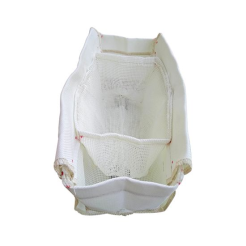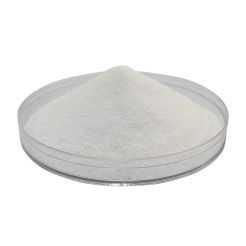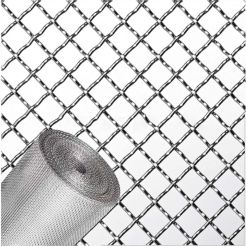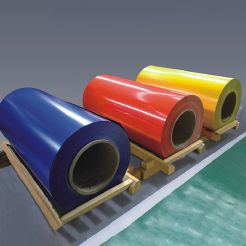Copper Scrap Wire
Copper scrap has great uses, it is not only an important source in the field of copper art production, but also through recycling, you can avoid waste of resources, especially for our country, which is in short supply of copper resources, the recycling of copper scrap is particularly important.
Product Description
The use of scrap copper
Copper scrap has great uses, it is not only an important source in the field of copper art production, but also through recycling, you can avoid waste of resources, especially for our country, which is in short supply of copper resources, the recycling of copper scrap is particularly important. Recycling and reuse of copper scrap not only helps to save resources, reduce dependence on foreign copper resources, but also conducive to environmental protection and resource reuse, thus having a positive impact on economic development and environmental protection. Copper scrap can be treated in a variety of ways, including:
Smelting and recycling: by heating the copper scrap to high temperatures, melting it and pouring it into a mold to re-form it and use it again to make copper products. This way can recover copper resources and reduce the pollution of copper waste to the environment.
Electrolytic recovery: Waste copper products are added to the electrolytic cell, and copper ions are precipitated in the electrolyte through the action of current to form pure copper. This method is efficient and less polluting.
Processing and reuse: the waste copper products are shear, compression and other treatment, converted into copper blocks, copper wire and other forms, re-used in the manufacture of copper products. This way not only recycles resources, but also reduces energy consumption.
Environmental protection treatment: For waste copper products containing harmful substances, such as lead-containing copper products, physical treatment (separation, filtration) and chemical treatment (chemical reaction transformation) are used to protect the environment and reduce the harm to the ecosystem.
In summary, the use of copper waste is not limited to as a raw material for copper art production, but also includes a variety of treatment methods, aiming to achieve effective recovery of resources and environmental protection.
Classification standard for scrap copper
In general, the classification of copper scrap is divided by the content of pure copper.
Bright Copper (Cu > 99%)
#1 Copper (Cu 97%)
#2 Copper (95%-96%)
Motor copper (92~94%) : It is generally the copper on the motor in the motor.
Purple copper (79-81%)
Smelting grade copper (Cu90-92%)
Copper brick (CU93%)
Burning line (95-97%)
Copper edge material
H59 yellow mixed copper. Brass is represented by +H; (Yellow) indicates H80, H70,H68, and H59.
In fact, they are called copper, but the market is more of the kind called purple miscellaneous copper, copper content is about 80%, and brass is also traded more scrap metal varieties, the general brass is 59 brass is containing pure copper 59%, the rest of the composition of zinc, this copper is also called yellow miscellaneous copper
Main alloy scrap copper
Brass ----- copper zinc alloy
Bronze ----- copper tin alloy, etc. (in addition to zinc nickel, alloys with other elements are called bronze)
White copper ----- copper-cobalt-nickel alloy
Chemical application of copper
What is electrical erosion? How to avoid electrical erosion?
When different metals come into contact with each other in oxygen and moisture, the more valuable metal is better able to withstand corrosion than the less valuable metal. Copper is one of the most precious metals and must be separated from other sub-precious metals. Contact between metals of different kinds should be avoided as far as possible. If contact cannot be avoided, then apply a bismuth or zinc chromate coating or paint layer to the adjacent surface. In addition, binding or filling with non-adsorbent materials is also very effective. Metals are graded according to their value.
At the same time, the scour on the copper surface should be avoided as much as possible to wash onto the adjacent, exposed surface of the secondary precious metal, because the copper salt carried in the scour will accelerate the corrosion of the secondary precious metal.
Are fir shingles compatible with copper waterproof panels?
When the tile is installed, if it is in direct contact with the metal waterproof plate, the water will flow out through the capillary under the front tile eaves. The water will still be in contact with the waterproof plate and become more acidic. This acidic water corrodes the waterproofing board in a lateral form, resulting in "interfacial corrosion" or pinholes in the waterproofing board. The correct approach is to raise the front eaves to a bevel, thus breaking the connection between the tile and the waterproof plate.
How can the primary color of copper be prevented from weathering after installation?
No protective system can permanently prevent the weathering of copper. There are clear coatings that provide short-term protection for external applications and long-term protection for internal applications.
Can naturally occurring patina be accelerated with artificial chemicals?
Due to the precise temperature, humidity and chemical requirements, it is not generally believed that copper can artificially produce patina in a certain area. However, there are also a number of field-applied patina advance generation systems that, with proper training, have proven quite successful. In the United States, there are a number of copper sheet manufacturers that provide plant and field application of patina advance generation systems under controlled conditions. Patina is produced when the results of the patented chemical process are applied to a widely guaranteed, true patina chemical conversion coating.
Do copper systems need sealants?
Most copper installations rely on self-protectors and do not require any sealants. In some conditions, such as on low roof slopes, sealants are recommended as a secondary waterproofing material. However, it should be noted that copper has a longer life than all sealants, and regular maintenance and inspection is necessary in any situation where sealants are used. In general, butyl, compound sulfide and polyurethane are more suitable for copper. Sealants such as acrylic, chloroprene and nitrile are quite active against copper corrosion. Silicon sealants have been very successful against copper, and their suitability should be certified by the manufacturer.
Action of copper
What is the role of flux in copper systems?
In roof and wall systems, people require water-tight joints, which require welding. A welded joint combines two pieces of copper into a coherent, water-tight unit that expands or shrinks as a whole. The welded joints are in many cases stronger than the original base material, so they can be used satisfactorily for many years.
What is the role of lead in leaded copper?
Leaded copper is a type of copper produced by the copper industry in order to form a strong, lightweight, durable, and easy to install gray metal finish on a copper substrate. This material has been around since the last century. Leaded copper does not extend the life of a copper roof. Its purpose is simply to change the applied architectural copper to another color. In addition, the coating of lead-copper run-off achieves the goal of providing a metal whose run-off produces rust that is substantially consistent with light-colored materials. The resulting spots vary in color from light to dark, similar to those formed by weathering masonry and paint in the natural atmosphere. When the lead layer has multiple holes, under external conditions, the underlying copper will undergo rapid pitting corrosion due to electrical corrosion.
What are the advantages of using copper waterproof panels?
Copper waterproof board beautiful, less maintenance, long service life. When the roof needs to be replaced, copper does not need to be replaced, unlike most other waterproof materials.
Type classification of copper
After introducing so many research applications and attention problems, what is the general model of construction copper products that people talk about?
Copper products are generally divided into three different types: strip, roll and sheet.
Recycling significance
There is no standard for copper scrap in China, but with the acceleration of China's industrialization, the social and economic environment faced by the recycling, trade and recycling industry of waste non-ferrous metals has undergone major changes, not only the variety composition of waste non-ferrous metals has changed greatly, but also a large number of foreign waste non-ferrous metals and various types of usable waste poured into the country. It provides a rich source of raw materials for the production of non-ferrous metals in China, and also puts forward new requirements for the production and processing of recycled non-ferrous metals. Therefore, China is also stepping up the development of waste metal standards. The "Classification and Technical Conditions of Copper and Copper Alloy Waste Parts" led by the Recycled Metals Branch of the China Non-Ferrous Metals Industry Association has been included in the national technical standards revision plan. The new waste non-ferrous metals classification standard will refer to the classification standard of waste non-ferrous metals in the United States and the European classification technical standard, combined with the actual situation of China's recycled non-ferrous metals industry to be revised, so that it is more conducive to the implementation of enterprises and management departments. The revision of the standard is expected to be completed by the end of 2002.
Utilization treatment
Virtually all copper scrap can be recycled. The regeneration process is simple. First of all, the collected copper scrap is sorted. The uncontaminated copper scrap or the copper alloy with the same composition can be melted back in the furnace and used directly. The seriously polluted copper scrap should be further refined to remove impurities. For mixed copper alloy scrap, it is necessary to adjust the composition after melting. Through such regeneration treatment, the physical and chemical properties of copper are not damaged, so that it is completely updated. The specific steps are as follows:
Sort
Copper scrap involves a wide range, including copper, brass, bronze, white copper scrap, of which purple scrap copper scrap is the most, such as waste cables, copper pipes, copper pipes, rods, plates, blocks, belts and so on. According to the convenience of its recyclable processing, it can be divided into 5 types.
Category 1:
(a) Copper tubes, rods, plates, blocks and belts, with clean surfaces, free of sludge and other adhesion and inclusions;
(b) All kinds of bare copper wire, short wire and other pure copper scrap.
Category 2:
(a) If the first type of copper waste is mixed with paper scraps, various insulating materials, a small amount of mud, rust, debris, but its total mass is not greater than
1%;
(b) enamelled wire with a diameter of more than 0.3mm is free of dirt and debris.
Class 3: all kinds of discarded pure copper or pure copper electrical switches and parts with a thin galvanized layer.
Category 4:
(a) enamelled wire with a diameter of 0.1~0.3mm;
(c) enamelled wire with mud or a small amount of other inclusions;
(c) Clean, crisp fire lines.
Class 5: All kinds of pure copper water tanks, evaporators, heat exchangers, but there must be no filling inside, only a small amount of naturally formed scale is allowed.
Handle
Scrap copper in the United States is classified according to its purity. The United States Scrap Metal Recycling Institute even subdivides copper and its alloys into 53 categories. Copper with a cu content greater than 99% is usually called No. 1 copper, which can be directly remelted and used without requiring further processing; Copper with a minimum copper content of 94.5% is called No. 2 copper and must be remelted before it can be used as metallic copper. Other common classification grades include leaded brass, brass and low zinc brass, shell brass, automotive heat sink, high copper brass (red brass), high speed cutting brass, etc., which can be used to rework copper products in the form of alloys of the same composition.
Process introduction
The variety of waste copper is complex, and the recycling skills and processes are also different, but it is usually divided into two parts: pre-disposal and recycling. The so-called pre-disposal is to classify the thick and cloudy waste copper, select other waste that is mechanically mixed, remove the oil on the surface of the waste copper, etc., and get a single variety of relatively pure waste copper, which provides excellent materials for smelting, and then simplifies the smelting process. There are many ways to recycle waste copper, which can be mainly divided into two categories, namely the direct use of waste copper and the direct use of waste copper. Direct use is the direct smelting of high-quality copper waste into fine copper or copper alloy, direct use is to remove the base metal in the waste copper, and cast it into a anode plate, and then electrolytic copper.
In this paper, the pre-disposal skills of scrap copper wire and cable are introduced, and the processes and patents of some foreign recycled copper plants are introduced.
Pre-disposal of waste wires and cables
The pre-disposal intention of waste wire and cable is mainly to separate copper wire and insulation layer, and there are four main ways:
1. Mechanical separation method, which can be divided into two types.
(1) Drum peeling machining method. This method is suitable for disposal of waste wires and cables of the same diameter. We already have such equipment in our country. British Wolfehampton factory is the use of this equipment for scrap wire, cable peeling, the effect is very good.
Waste wire, cable first cut growth does not exceed 300 mm line segment, and then manually sent to the special rotary drum shredder, in the rotary drum shredder, the wire and cable are broken and peeled, debris leakage from the bottom diameter of the drum blade screen hole of 5 mm, the drum speed of 3000 RPM, the drum diameter of 30 inches, the gap between the drum blade and the bottom screen surface is 1.5 mm, Rotary drum shredder can be disposed of 1 ton/hour, and the motor power is 30 kW. The debris leaking from the screen is sent to the bin with a belt, and then the vibration feeder sends the debris to the shaking table for sorting, and the copper chips, mixtures and plastic fibers are obtained at the end, copper chips can be directly used as copper smelting materials, and can also be used to produce copper sulfate materials, the mixture is disposed of by the reverse drum shredder, and plastic fibers can be sold as products. Each ton of waste wire and cable can produce 450-550 kilograms of copper chips, 450-550 kilograms of plastic. One week can handle 60 tons of material, produce 30 tons of copper chips, 30 tons of plastic. Replace the blade once every 30 tons of waste cable and wire. The blades are made of high speed east-west steel.
This process has the following features:
A. Copper and plastic in waste wire and cable can be recovered, and the level of induction and use is high;
B, the output of copper chips does not contain plastics at all, reducing the pollution of plastics to the atmosphere during smelting;
C, the process is simple, easy to mechanization and automation;
The defect of this equipment is that the power consumption is higher in the process and the blade wear is faster.
(2) Cutting type peeling machining method. This method is suitable for the disposal of thick cables and wires, and a factory in Xiangfan has been able to produce such equipment.
Low temperature freezing method
Us Patent No. 3990641 proposes the use of cryogenic freezing to separate the copper from the insulation layer of scrap wire.
The cryogenic freezing method is suitable for the disposal of wires and cables of various specifications. The insulation layer of the waste wire and cable is brittle by freezing first, and then separated from the copper wire by vibration breaking.
Chemical stripping method
The method uses an organic solvent to dissolve the insulation layer of the waste wire to reach the intention of separating the copper wire from the insulation layer. The advantage of this method is that it can get high-quality copper wire, but the disadvantage is that the disposal of the solution is relatively difficult, and the price of the solvent is high, the development direction of the skill is to study a useful solvent that is useful at a low price.
Thermal decomposition method
Us Patent No. 4,040,865 proposes to burn off the insulation by thermal decomposition to produce copper wire.
The waste wire and cable are first cut and then transported to the pyrolysis chamber by the feeder. The copper wire after pyrolysis is sent to the discharge port water seal pool by the grate conveyor and then loaded into the product collector. The copper wire can be used as the material for producing fine copper. The gas generated by pyrolysis is sent to the secondary combustion chamber to burn the combustible substances in it, and then sent to the reactor to absorb the chlorine gas in it with calcium oxide and discharge it. The calcium chloride generated can be used as building materials.
Waste copper regeneration process reference
Germany Caisser exercise plant is a typical recycled copper plant, but also a representative of the old enterprise. The plant is located in Termond City, built in 1861, the existing 700 employees, the plant area of about 30 square kilometers, annual output of 115,000 tons of electrolytic copper, but also produces copper ingots, copper sulfate, nickel sulfate, zinc oxide, lead-tin alloy and other products.
1. Process clarification
The two-stage method and the three-stage method are associated with the process flow, which is conducive to reducing energy consumption and improving the recovery rate of valuable metals. Production equipment for the traditional blast furnace, converter, fixed reflector furnace and conventional electrolytic equipment. The plant has two blast furnaces with a cross-sectional area of 3.75 square meters (2.5×1.5 meters), a daily disposal capacity of 150 tons, and a bed energy rate of 40 tons/square meters. Day and night, the coke rate is 17%, and the copper content of blast furnace waste slag is less than 1%. Among them, a blast furnace is used to dispose of copper debris and powder copper containing materials, which are processed into pellets before being put into the furnace; Another blast furnace is used to dispose of yellow mixed copper and massive copper-bearing slag. The black copper of 75-85% produced by the blast furnace is blown in two 30-ton bessayers. The two anode furnaces are fixed reflector furnaces with a bed area of 60 square meters. Daily, unit fuel consumption 70-80 kg/ton anode, furnace lined with chrome magnesia brick. In the smelting process of reverberatory furnace, oxygen oxidation and wood restoration are selected.
The starting plate of electrolytic concentrate is made of titanium mother plate, and the electrolytic cell is covered with plastic cover plate to reduce heat loss. The steam consumption is 0.8 tons/ton copper, the current density is 200 amp/meter 2, the current efficiency is 95-97%, and the power consumption is 250 degrees/ton copper. The line ingot furnaces are two 85-ton fixed reflector furnaces, lined with chrome-magnesia bricks, oxidized with oxygen, and restored by inserting wood. The fuel consumption is 80 kg/ton copper, the oxygen content of the product is less than 250ppm, the sulfur is 20ppm, and the material is about 7% of high-grade purple mixed copper in addition to electrolytic copper.
2. Process features
The classification of waste copper in the plant is very perfect, according to the grade, variety, material shape separate accumulation, separate disposal, copper recovery rate is high, and the quality of lead, tin, zinc can be summed up and recovered. In addition, the starting sheet production line of the copper electrolysis workshop is depicted as a stepped starting sheet rack, which has a unique feature.
Processing copper from recycled copper
Grade (more than 92%) of purple mixed copper, after the equivalent of the anode furnace fire refining, directly mixed with other copper melt cast into rod or slab. The plant employs 2,700 people and has an annual output of 650 million marks. The main products are various types of copper pipes, copper strips, copper plates, copper alloy bars, profiles. Monthly production of various types of copper about 12,000 tons.
1. Process clarification. Good Hope Metal Products factory has a shaft furnace (ASDRCO-SHAFT-RURNACE). The melting capacity of shaft furnace is 20 tons/hour, and 1000 standard meters 3 / hour. Natural gas, SiC lining.
The shaft furnace is disposed of differently according to the copper liquid melted from different copper materials. When more than 99% of purple copper and cathode copper is melted, the copper liquid enters the continuous casting machine after holding the furnace, or directly sends the copper liquid to the semi-continuous casting machine to produce various kinds of rod or slab. When the shaft furnace melts 92-99% of the scrap copper material, the copper liquid is sent to the converter or open furnace for fire refining, and then through the continuous casting machine or semi-continuous casting machine to produce rod or slab.
2. Process features.
(1) In order to guarantee the quality of the product, the classification and management of waste copper is very strict.
(2) For purple mixed copper with copper grade between 92-99%, it is melted by shaft furnace and entered into converter or open furnace refining. The refined copper liquid is directly cast into various types of slab and rod billet, avoiding repeated smelting, improving the copper recovery rate of more than 0.2%, saving fuel equivalent to 400 kg/ton of standard coal copper, and good economic benefits.
(3) The factory has the world's only large diameter copper pipe casting production system, its diameter is 300-1500 mm, the longest up to 11,000 mm.
(4) Recovery of copper from mixed waste
Us Patent No. 3905556 proposes a method for disposing of mixed waste with a high copper content that fluctuates greatly. In the process, the high content of mixed waste at the end of the crushing - wind separation - magnetic separation - shredding disposal, with three layers of screening dividends, coarse, medium and fine three materials, and then the three materials according to the amount of metal contained, shape and variety are not the same, then choose different gravity separation process for disposal.
(5) Recovery of copper from waste containing arsenic
U.S. Patent No. 4,149,880 describes a method for recovering copper from arsenic-containing waste. In this method, the dust with high arsenic content is pulped and leach in the autoclave, the leach solution is replaced with iron chips after removing molybdenum, and the produced sponge copper is returned to the smelting system to produce metal copper, and the mother liquor after the replacement of copper is recovered zinc and cadmium, and then sent to the water treatment workshop to recover arsenic.

Email: 251596990@qq.com
Mob.: +86 130 2226 7000
Whatsapp: +8618806355666
Add.: Chow Tai Fook Financial Center, First Street, Binhai New Area, Tianjin, China









